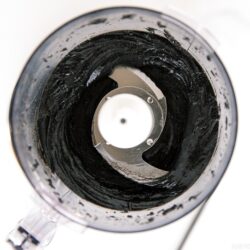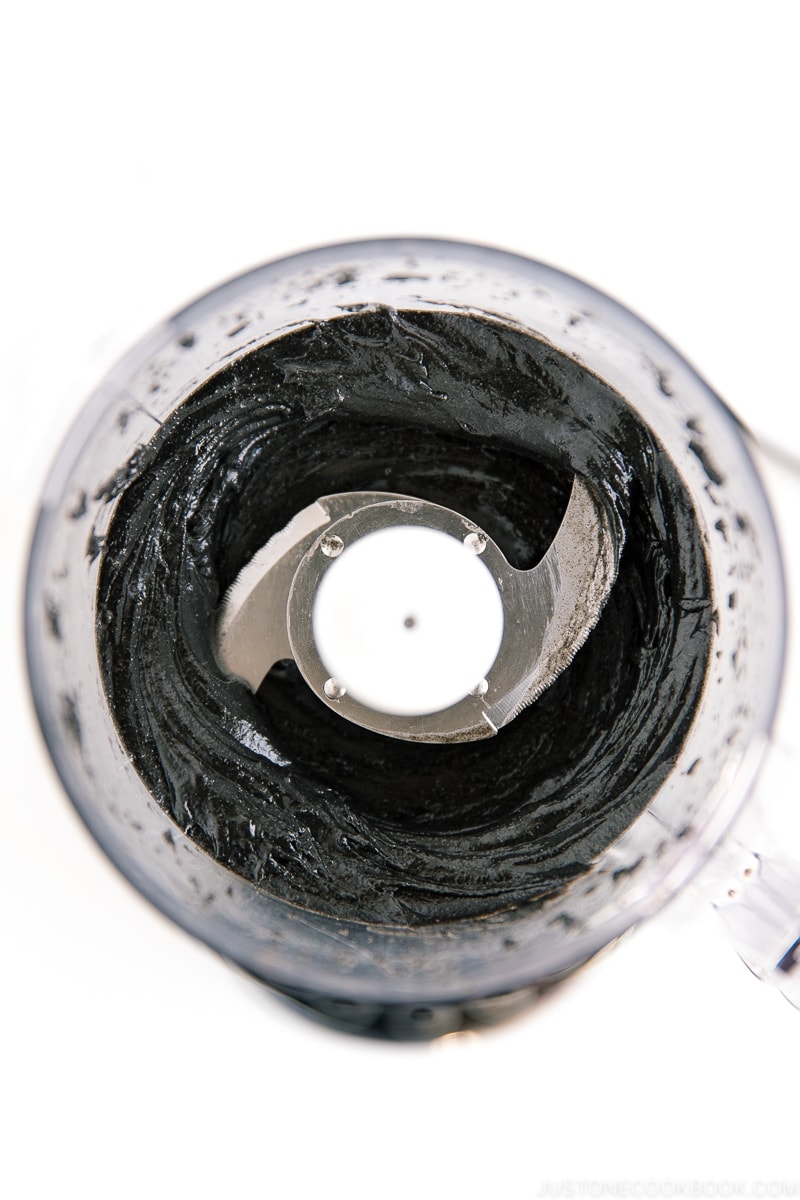
In Japan and other East Asian and Southeast Asian cuisines, black sesame seeds are used extensively in cooking, baking, and desserts. Whether making savory or sweet dishes, we use the black sesame seeds either whole or in powder and paste forms.
Black sesame is one of my favorite flavorings for pastries and sweets! When summer comes around, I make a jar of homemade black sesame paste (kuro neri goma) and store it in the fridge so I can always whip up black sesame ice cream and other treats. It’s also delicious to add to savory foods like black sesame dan dan noodles.
Let me show you my simple method for how to make black sesame paste from scratch with both savory and sweet options included.
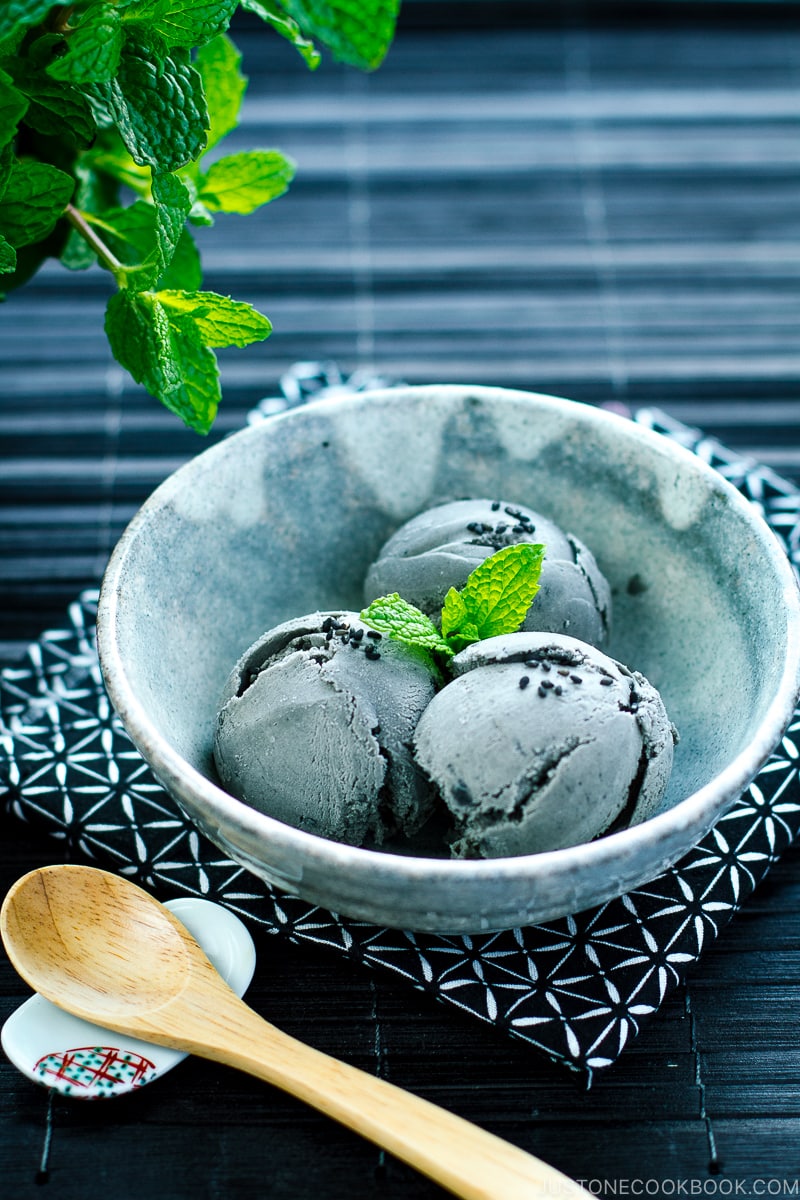
What Is Black Sesame Paste?
To make black sesame paste, unhulled sesame seeds are first toasted and later ground into a thick puree. Then, we add either honey to sweeten it or sesame oil to take it in the savory direction.
With a glossy, jet-black color and uniquely rich nutty flavor, black sesame paste can change the dynamic of a dessert completely. I would also describe the taste as slightly earthy with a mildly bitter undertone, which provides a nice counterbalance to any sweets.
You can find many popular Japanese sweets and pastries such as macarons, purin (Japanese pudding), chiffon cake, mochi, bread, and black sesame ice cream.
Black sesame paste (kuro neri goma 黒練りごま) is typically sold in a small jar at Japanese (or Chinese) grocery stores or on Amazon, but you can easily make it at home.
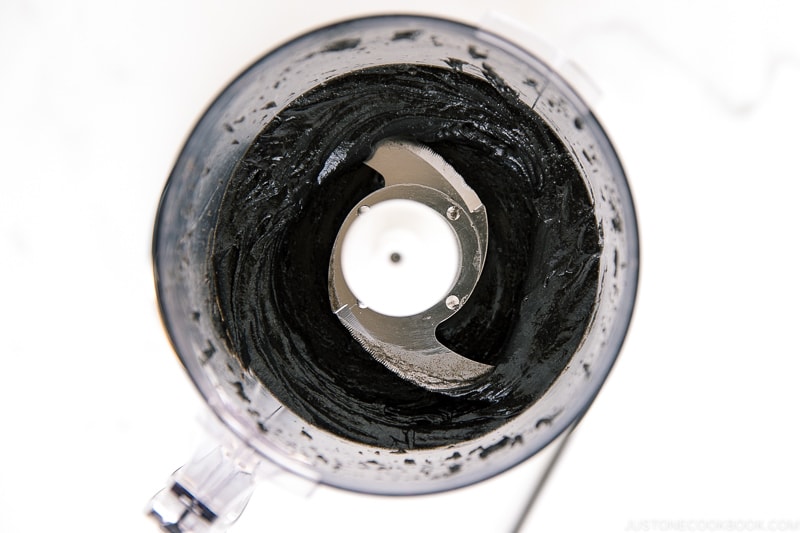
2 Simple Ingredients You’ll Need
It’s so easy to make homemade black sesame paste! You’ll need only:
- black sesame seeds
- honey (for a sweet paste) or sesame oil (for a savory paste)
How To Make Black Sesame Paste
You can make this recipe in a total time of 10 minutes.
- Toast the black sesame seeds in a dry pan over medium heat to enhance the aroma (even if they come pre-toasted).
- Grind the sesame seeds in a small food processor. I use a 3-cup food processor. You could also grind them with a Japanese mortar (suribachi) and pestle (surikogi), but this takes some time.
- Scrape down the sides of the food processor bowl and blend again. Take breaks to avoid overheating the motor, if needed. It will take some time for the seeds to release their natural oil. Optional: If the food processor is struggling, you can add a tiny dollop of honey or tasted sesame oil.
- It’s done once the sesame seeds are ground, liquidy, and pasty in texture. Transfer to a sterilized mason jar.
Once you make the paste, you can store it in the refrigerator for up to 1 month!

Recipes Ideas for Black Sesame Paste
Try this paste in black sesame ice cream and black sesame dan dan noodles. You can also use black sesame paste to make a filling for mochi; add to your smoothie; make creme brulee, custard, and pudding; or add to a dipping sauce for fruit like banana and apples.
Black sesame paste is gluten-free and known to be an excellent source of calcium, magnesium, iron, and healthy fat, so that’s a double win!
Wish to learn more about Japanese cooking? Sign up for our free newsletter to receive cooking tips & recipe updates! And stay in touch with me on Facebook, Pinterest, YouTube, and Instagram.
Homemade Black Sesame Paste (Kuro Neri Goma)
Ingredients
For Black Sesame Paste for Sweets
- 1 cup toasted black sesame seeds
- ½ tsp honey (optional)
For Black Sesame Paste for Savory Dishes
- 1 cup toasted black sesame seeds
- ½ tsp toasted sesame oil (optional)
Instructions
- Gather all the ingredients. Please note: I used ½ cup (60 g) of black sesame seeds in the step-by-step photos; however, I noticed it was much easier to make a paste when I used 1 cup in a 3-cup food processor. If you use less, or use a bigger food processor, the blades will spin without engaging the sesame seeds and you won‘t be able to make a paste. Therefore, I updated the ingredient list with 1 cup of sesame seeds [revised March 2023].
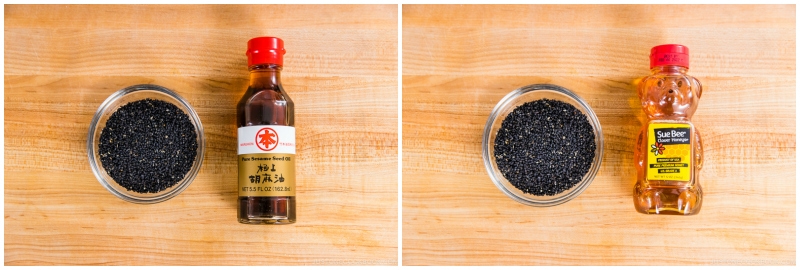
- In a non-greased pan, toast 1 cup toasted black sesame seeds to enhance the aroma.
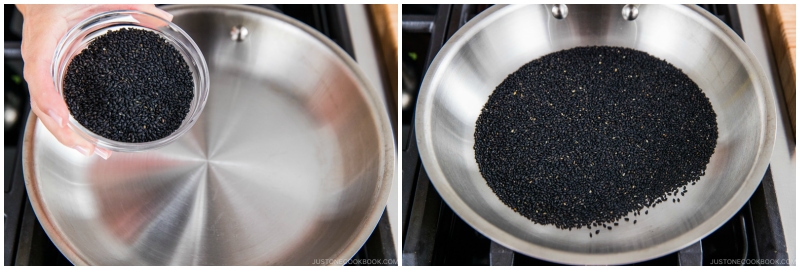
- Put the toasted sesame seeds in the food processor and start processing. You can also grind the black sesame seeds by mortar and pestle (but it will take some time).
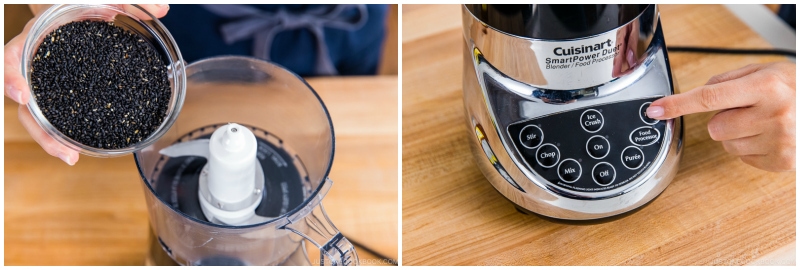
- It will take some time for the sesame seeds to release their oil, so be patient.
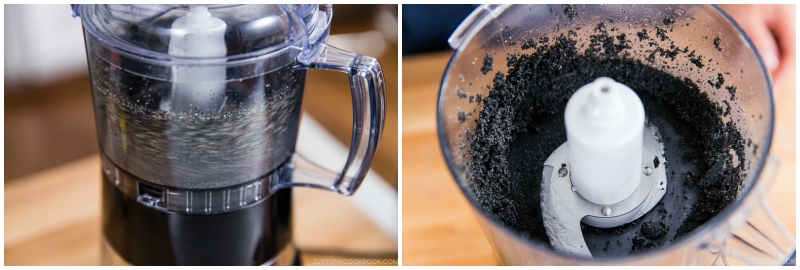
- Scrape the sesame seeds from the sides as needed and run again. Depending on the machine, you may need to take a break to avoid overheating the motor.
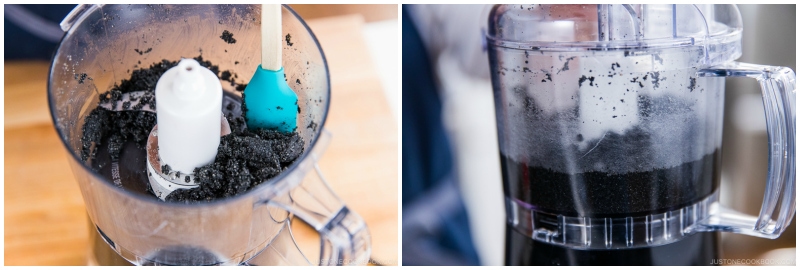
- [Optional] Add ½ tsp honey or ½ tsp toasted sesame oil, but only if your food processor is struggling. Sesame seeds themselves contain oil that naturally releases during toasting and grinding, so it’s usually enough to create a thick sesame paste. However, if your food processor is struggling to crush and grind, you can drizzle a little bit of sesame oil onto the seeds to add volume, help bind them, and thin out the paste.
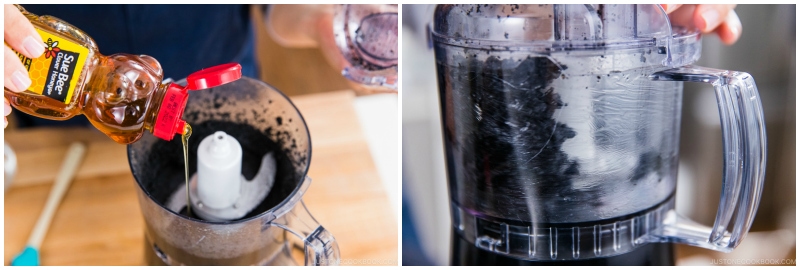
- The sesame seeds will start to look pastier. Continue processing.
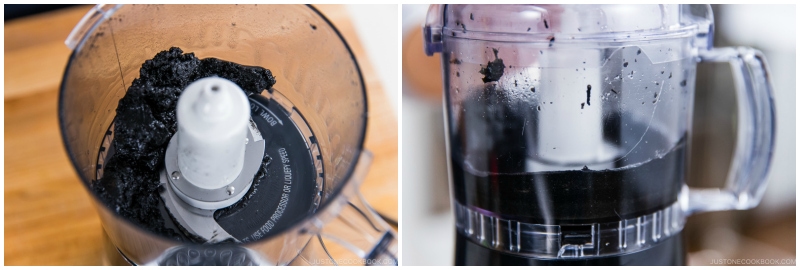
- Once the sesame seeds are ground, liquidy, and pasty, transfer to a sterilized mason jar.
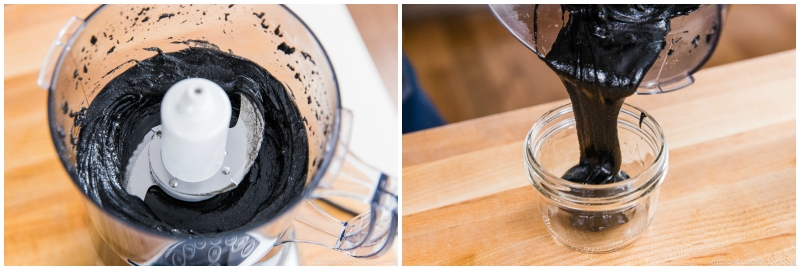
To Serve
- You can use the black sesame paste to make sweets like Black Sesame Ice Cream. This Kuro Neri Goma is also a key ingredient in savory dishes like Black Sesame Dan Dan Noodles.
To Store
- You can store the homemade sesame paste in the refrigerator for up to 1 month and in the freezer for half a year. Bring the paste back to room temperature before using it.
Nutrition
Did you make this recipe?
Tag @justonecookbook on Instagram so we can see your delicious creation!


